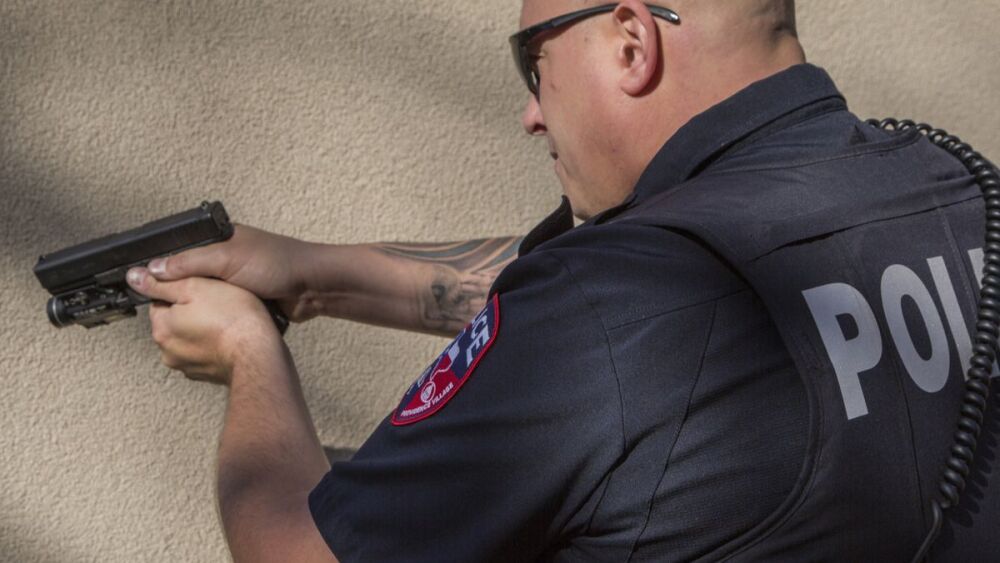Even with the proliferation of videos of police officers in action, there is a tremendous amount of drama in policing that never sees the light of day.
I recall my closest encounter with deadly force involved a domestic call, a drunk with a large knife and my trigger squeeze being prevented by the appearance of a toddler in the line of fire. I remember finally getting behind the wheel of my patrol car and gaining control of my breathing. The report was filed at the station, and then I was on to the next call. Based on my research, similar scenarios happen routinely for law enforcement.
My own survey of over 200 police officers that I reported at the 2009 International Association of Chiefs of Police conference in Denver was confirmed by a report in the FBI Law Enforcement Bulletin (LEB) in 2010. As the LEB article reports “approximately 70 percent of the sample of police officers had been in a situation where they legally could have fired their weapon during a critical incident but chose not to.”
No research on success
As I have lamented often, while the research on officers killed in the line of duty and on suspects killed by police is substantial, there is little data on near misses and shots not fired.
Deaths in police shootings are, despite popular belief, rare events. As such they may not provide as much helpful information as studies of the much more frequent occurrence of officer survival and suspects’ live apprehension.
The recent Chicago policy requiring officers to report by radio when they point a gun at someone has potential for helpful research. Although the policy is seen as potentially punitive, the opportunity to examine those incidents could provide valuable information to researchers for officer safety and training.
Training implications of deadly force decisions
As part of firearms and deadly force training, most officers and cadets will hear that taking a life is a rare event that is unlikely to happen but that they must prepare for it. A more realistic narrative would be that an officer will make deadly force decisions multiple times in a career or even on a single shift.
In recent decades, police firearms training has moved from mere target marksmanship to practice in decision-making to scenario-based integration of accuracy and decision-making. The good news about the frequency of shoot-don’t-shoot situations in real life is that almost any police department has enough incidents to develop the data for their own study. Answering the question of what factors tip the scales toward pulling the trigger is achievable for individual agencies.
Using local research to guide use of force policy
There is a growing emphasis on law enforcement agencies doing their own research. The days of small departments relying on studies from large agencies with the resources to pay for research or attract grants may be waning. Many officers and administrators have advanced degrees that required using research methods. Collaboration with area colleges or a sharp intern can yield helpful guidance on creating a viable study.
Developing a comprehensive and ethically sound research program isn’t rocket science, but it is science. Getting a valid and supportable outcome and analysis of data may result in new policies or new training processes. The outcome might also cast doubt on current policy and training. Therefore, the documentation of methodology and analysis could end up being an issue in the legal defense of an officer’s actions. Subject matter expert review of the research will help validate the findings and guide policy makers.
After action
Shift briefings are routine in departments across the country but debriefs get much less attention. Debriefs mainly happen after an event when those involved just want to get their paperwork done and go home. There may be fears of discussing a case that may be controversial. Debriefs can degrade into an attaboy session or an embarrassing finger-pointing session. They are also too often saved for “big” events so the potential lessons to be learned for “ordinary” events go unexamined. As we now realize, deciding to point a firearm or pull a trigger is quite ordinary and should be examined.
Even if there is no intentional research on how your officers navigated a deadly force situation with no shots fired, creating a culture of peer learning can bring individual experiences into the learning experiences of the entire department.
Supervisors, leaders and trainers can benefit from the ordinary drama that no one else knows or cares about.



